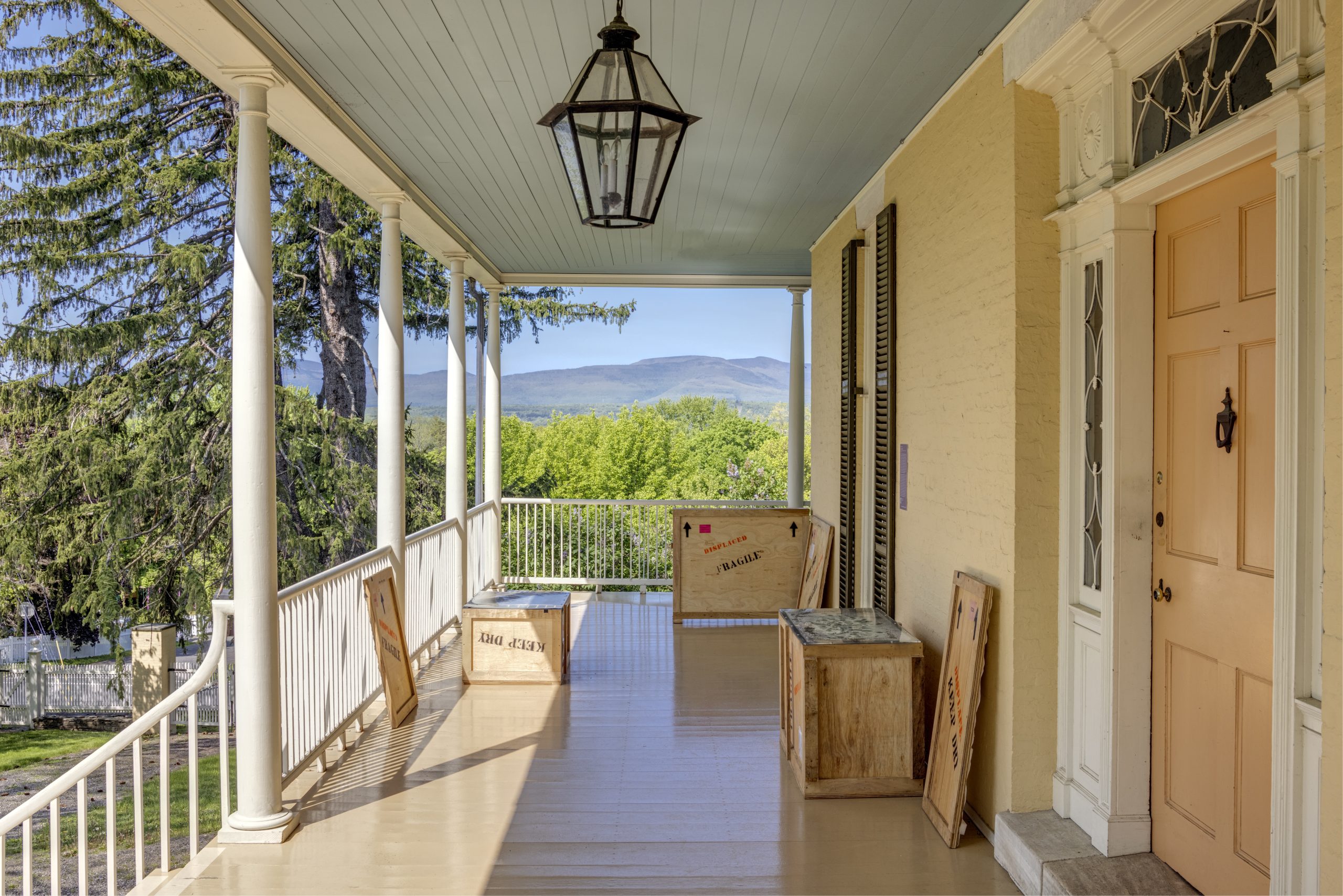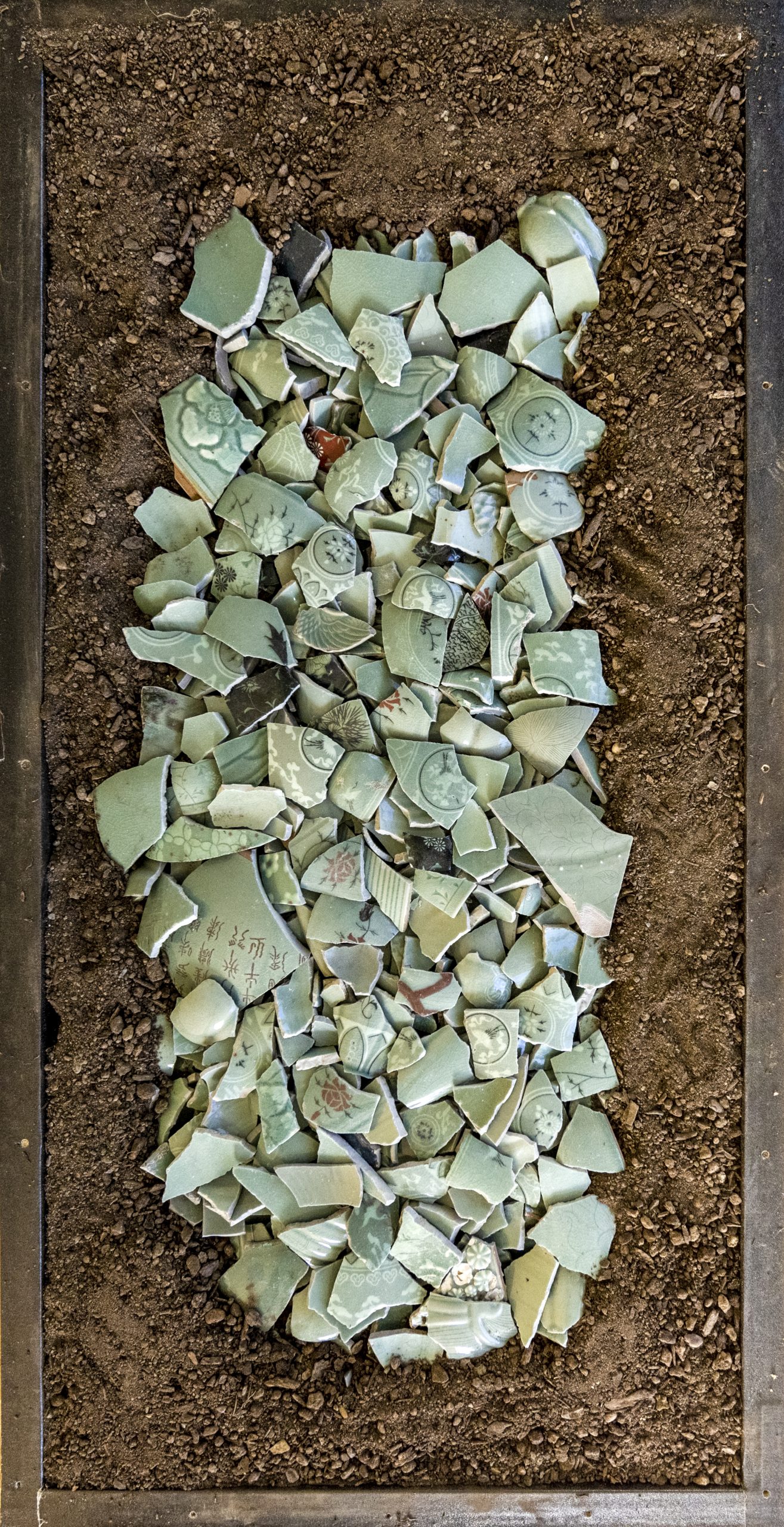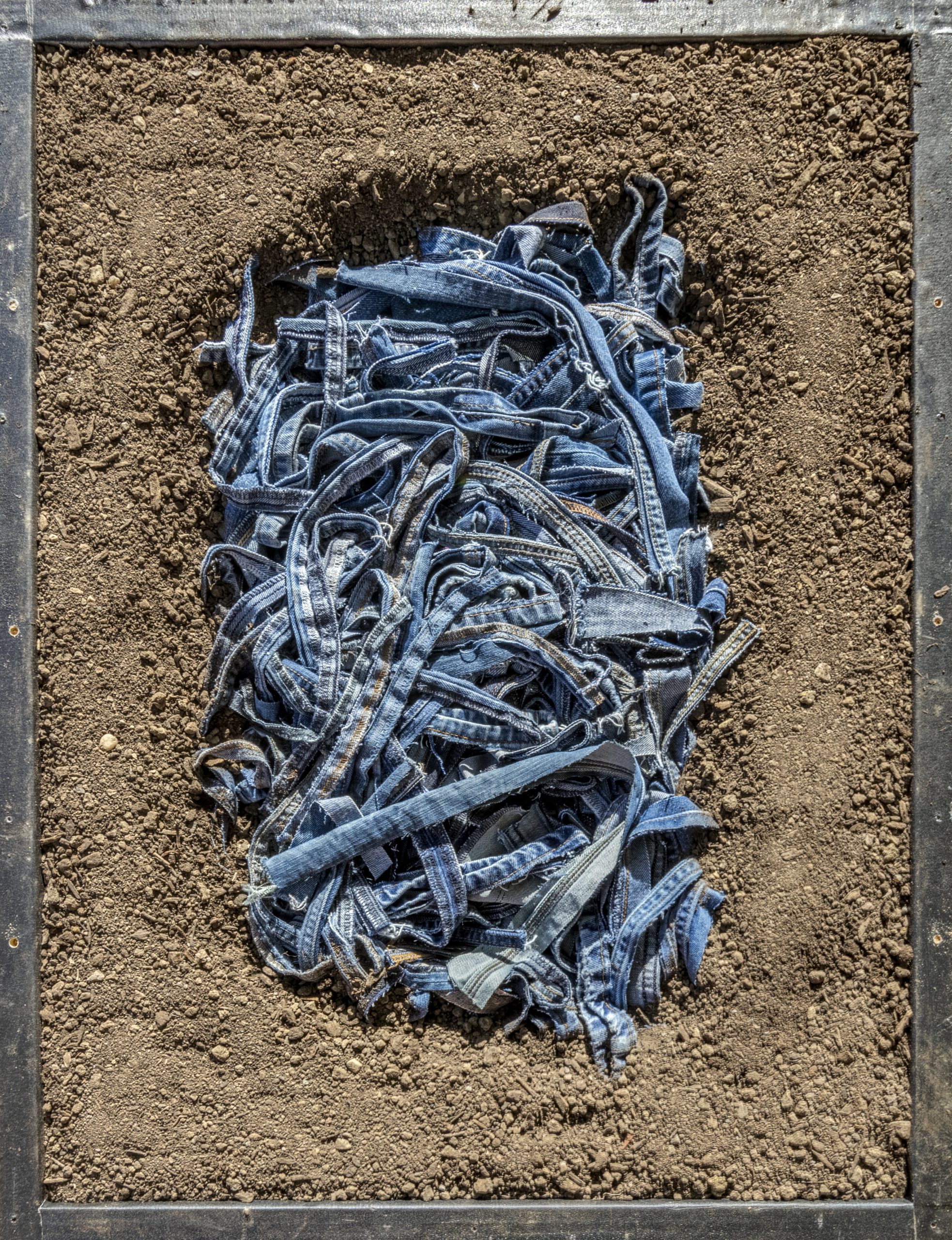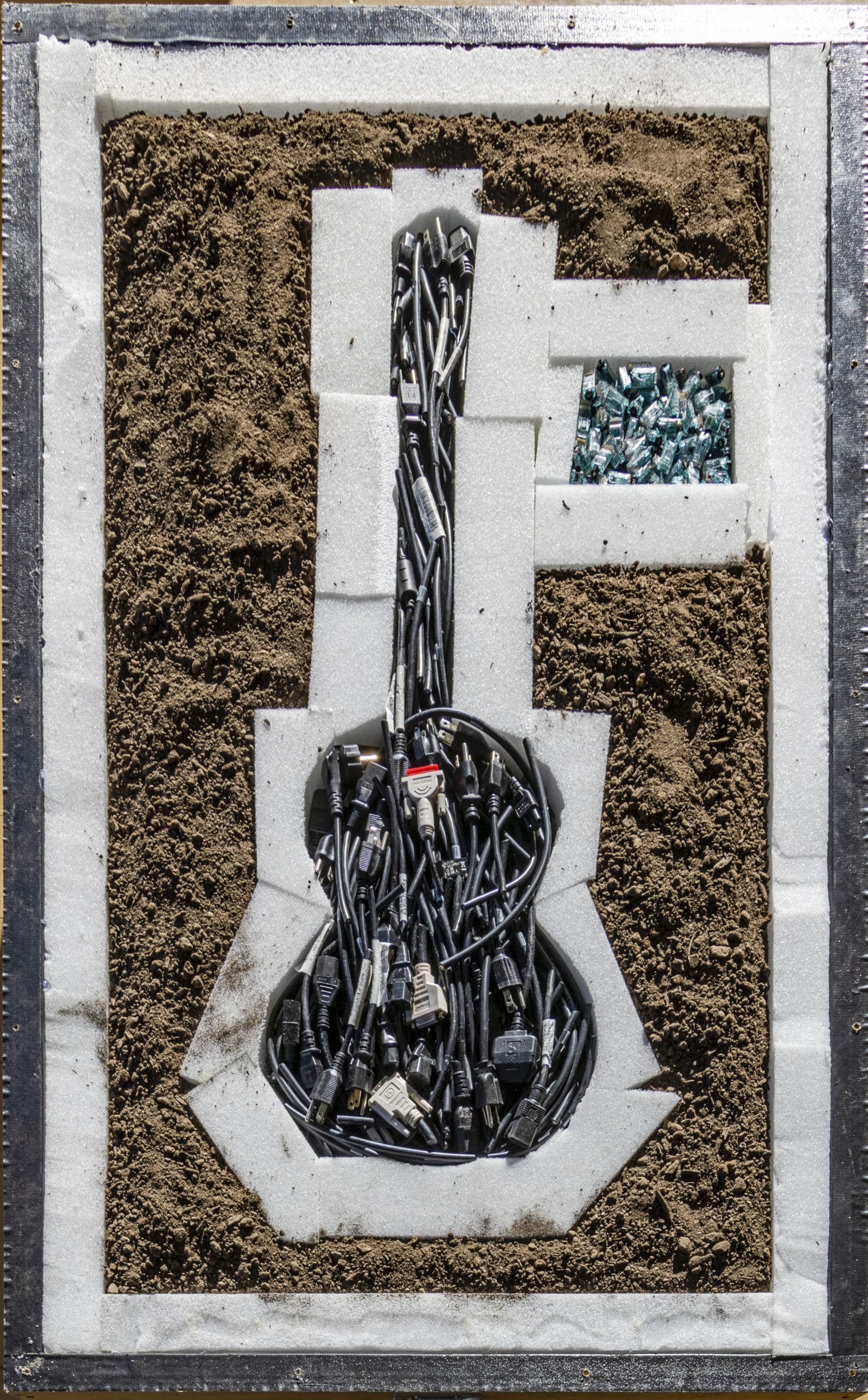Jean Shin
Displaced, 2023, Wooden crates filled with artist’s project remnants and local dirt, Courtesy the artist
Displaced, 2023, Wooden crate filled with artist’s project remnants and local dirt, Courtesy the artist
New York City and Hudson Valley-based artist Jean Shin collects excessive and defunct materials—such as castoff electronics, cell phones, clothing, plastic bottles, and umbrellas—to create artworks that encourage thoughtful reflection on consumption and human impact within ecosystems. In this moment of climate crisis, Shin asks: How do industry and global economies change the land and its very make up? On the occasion of Women Reframe American Landscape, Shin turned her focus onto the environmental consequences of the art and museum world, largely characterized by traveling exhibitions that require cross-country shipping and robust wooden art crates, which are often disposed of afterwards.
Displaced, a “time capsule” presented here, consists of an art shipping crate previously used by the Thomas Cole Site to travel artwork and artmaking materials once used by Thomas Cole and Emily Cole. Shin filled the crate with displaced earth as well as scraps from the creation of her own artwork. For the artist, this installation connects artists working past and present and acknowledges the carbon footprint of artmaking and exhibitions. Displaced brings a self-critical lens to the struggle to maintain a zero waste art practice,” and makes visible the way our earth and soil have become forever polluted with microplastics and consumer waste. Shin addresses landscape in this geological age of the Anthropocene, where human activity has substantially altered the environment and the paradox of artists and museums working with an ecological approach.
By situating my work outdoors, I amplify a dissected view of organic life cycles, while maintaining opportunities for close-up viewing and intimate reflection. I create imaginative installations, using cast-off materials to draw attention to everyday objects, underscoring their history of use, circulation, and cumulative impact upon our lived environments.
I recently collaborated with scientists to execute a monumental installation incorporating living species to address whole ecological systems. My commission at Cherry Street Pier for Philadelphia Contemporary presents a filtration ecosystem motored by freshwater mussels. Once abundant in the Delaware River, they now face extinction. This fountain is situated at the pier where polluted river water is pumped into the Delaware River. Made of mass produced and unused vintage pearl buttons manufactured all over the world, Freshwater (2022) is an urgent call to care for the mussels that are vital to our health and the health of our waterways.
Through research, I examine how extractive practices, overconsumption, and pollution from e-waste and plastics have devastated habitats and contributed to biodiversity loss in both land and water. Interdisciplinarity is fundamental to my practice that approaches materials and concepts holistically. My work is in constant evolution, never fixed. Freshwater, for instance, though already installed, can be expanded and rethought. Vibrant exchanges between artist and scientist underpin my practice, and will continue to, in particular through my residency at Stanford University working with infectious disease scientists conducting research on the effects of plastic pollution on planetary health. Together, we are reimagining how regenerative and circular practices can reverse harm and leave a thriving ecosystem for the next generation.
On the occasion of Women Reframe American Landscape at Thomas Cole National Historic Site, I am creating a time capsule and archive of waste from my past art installations. A poignant balance structures this sculptural installation. Displaced is simultaneously a reflexive apparatus for a given community, and a work informed by my experience as a first-generation immigrant bearing witness to racial, economic, and environmental injustices. It is a perspective that inspires me to originate meaning out of discards as a form of emotional and ecological repair; to address these inequities by reimagining the material potential of our world; to reveal forgotten histories and make visible the undervalued labor of the marginalized. This experiment in form asks that we question the value and role of preservation when confronted with the climate crisis. Working as an artist in the age of the Anthropocene, this future
work brings a self-critical lens to the struggle to maintain a zero-waste art practice. How might I balance the work of repurposing and the processes of entropy and decay? What knowledge might this project bring to the complex relationship of land stewardship and art-world practices?
— Jean Shin
JEAN SHIN (b. 1971) was born in Seoul, South Korea, raised in the US, and currently works in New York between Brooklyn and the Hudson Valley. She holds a BFA in Painting and an MS in Art History and Criticism from Pratt Institute. Shin is known for large-scale and often public sculptures, transforming accumulations of discarded objects into monuments that interrogate human relationships between material consumption, collective identity, and community engagement. Frequently working cooperatively with communities to facilitate conversation around social and economic 127 challenges, Shin’s works amass vast collections of everyday objects while researching their history of use, circulation, and environmental impact. Her body of work also includes several permanent public artworks commissioned by major agencies and municipalities, most recently a landmark commission for the MTA’s Second Ave Subway in New York City. Her work has been widely exhibited and collected in over 150 major museums and cultural institutions, including The Museum of Modern Art, New York; Philadelphia Museum of Art, PA; Smithsonian American Art Museum, Washington, DC; and the Asian Art Museum, San Francisco, CA, where in 2020 she was the first Korean-American woman artist featured in a solo exhibition. Shin has received numerous awards, including the Frederic Church Award, and her works have been highlighted in The New York Times and Sculpture Magazine, among others. She is a tenured Adjunct Professor at Pratt Institute and holds an honorary doctorate from New York Academy of Art.




